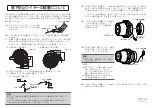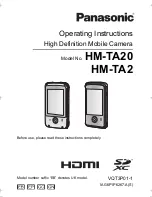
For cement wall, expansion bolts are required to fix the
camera. For wooden wall, self-tapping screws are
required.
5.
Connect the corresponding power cord, and video
cable.
6.
Power on the camera to check whether the image on
the monitor is gotten from the optimum angle. If not,
adjust the surveillance angle.
3
2
1
R:360°
T:90°
P:360°
Figure 2-3
3-axis Adjustment
1)
Loosen the No.
①
adjusting screw to adjust the
pan position [0° to 360°]. Tighten the No.
①
adjusting screw.
2)
Loosen the No.
②
adjusting screw to adjust the
tilting position [0° to 90°]. Tighten the No.
②
adjusting screw.
3)
Loosen the No.
③
adjusting screw to adjust the
rotation position [0° to 360°]. Tighten the No.
③
adjusting screw.
2.1.2
Ceiling Mounting with
Junction Box
Before you start:
You need to purchase a junction box separately.
Both wall mounting and ceiling mounting are suitable
for the bullet camera. Ceiling mounting will be taken as
an example in this section. And you can take steps of
ceiling mounting as a reference for wall mounting.
Steps:
1.
Paste the junction box’s drill template on the ceiling.
2.
Drill screw holes and the cable hole (optional) in the
ceiling according to the holes of the drill template.
Figure 2-4
Drill Template
Note:
Drill the cable hole, when adopting ceiling outlet to
route the cable.
3.
Take apart the junction box, and align the screw holes
of the bullet camera with those on the junction box’s
cover.
4.
Fix the camera on the junction box’s cover.
































